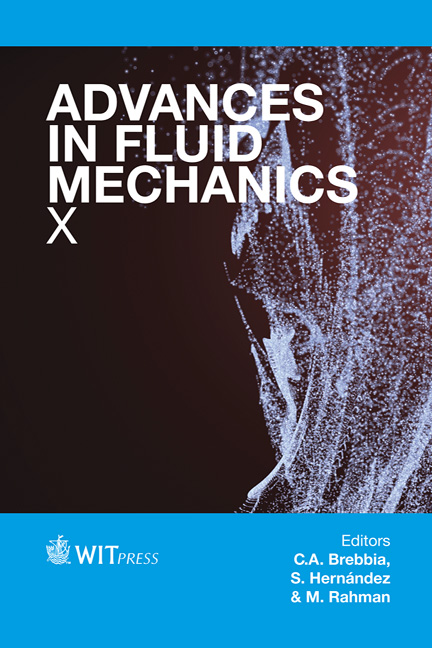Performance Analysis Of An Axial Exhaust Diffuser Downstream Of An Un-shrouded Turbine
Price
Free (open access)
Transaction
Volume
82
Pages
12
Page Range
419 - 430
Published
2014
Size
2,134 kb
Paper DOI
10.2495/AFM140361
Copyright
WIT Press
Author(s)
R. Blanco & S. Farokhi
Abstract
Performance of an axial exhaust diffuser downstream of an un-shrouded turbine rotor is computationally analyzed. Three-dimensional analysis of two turbine stage-exhaust diffuser configurations has been performed. In one case, the turbine rotor is shrouded and in the second case, the rotor is un-shrouded. The static pressure recovery coefficient in the exhaust diffuser is used as the diffuser performance parameter. It has been found that the over the tip leakage flow in the un-shrouded rotor emerges as a swirling wall jet at the upper wall of the diffuser. The case of the shrouded rotor produced no wall jet at the entrance to the diffuser and the turbine exit flow was \“quasi-uniform”. The presence of the wall jet allowed the annular diffuser outer wall angle at stall point to increase from 12° (in the shrouded rotor case) to 18° in the un-shrouded turbine. By changing the angular speed of the rotor, the effect of the swirl in the turbine exit plane on the performance of the diffuser was explored. In the shrouded rotor case, the diffuser recovers higher static pressure when the inlet is swirl-free. In this case, the performance of the diffuser is independent of whether the turbine exit flow has co- or counter-swirl. However, in the presence of un-shrouded rotors, higher static pressure recovery was achieved when the core flow possessed slight counter-swirl. This observation was more pronounced when larger diffuser upper wall angles were considered. Keywords: Wall jet flow, over the tip leakage, residual swirl flow, exhaust diffuser, turbine stage, static pressure recovery.
Keywords
Wall jet flow, over the tip leakage, residual swirl flow, exhaust diffuser, turbine stage, static pressure recovery.





